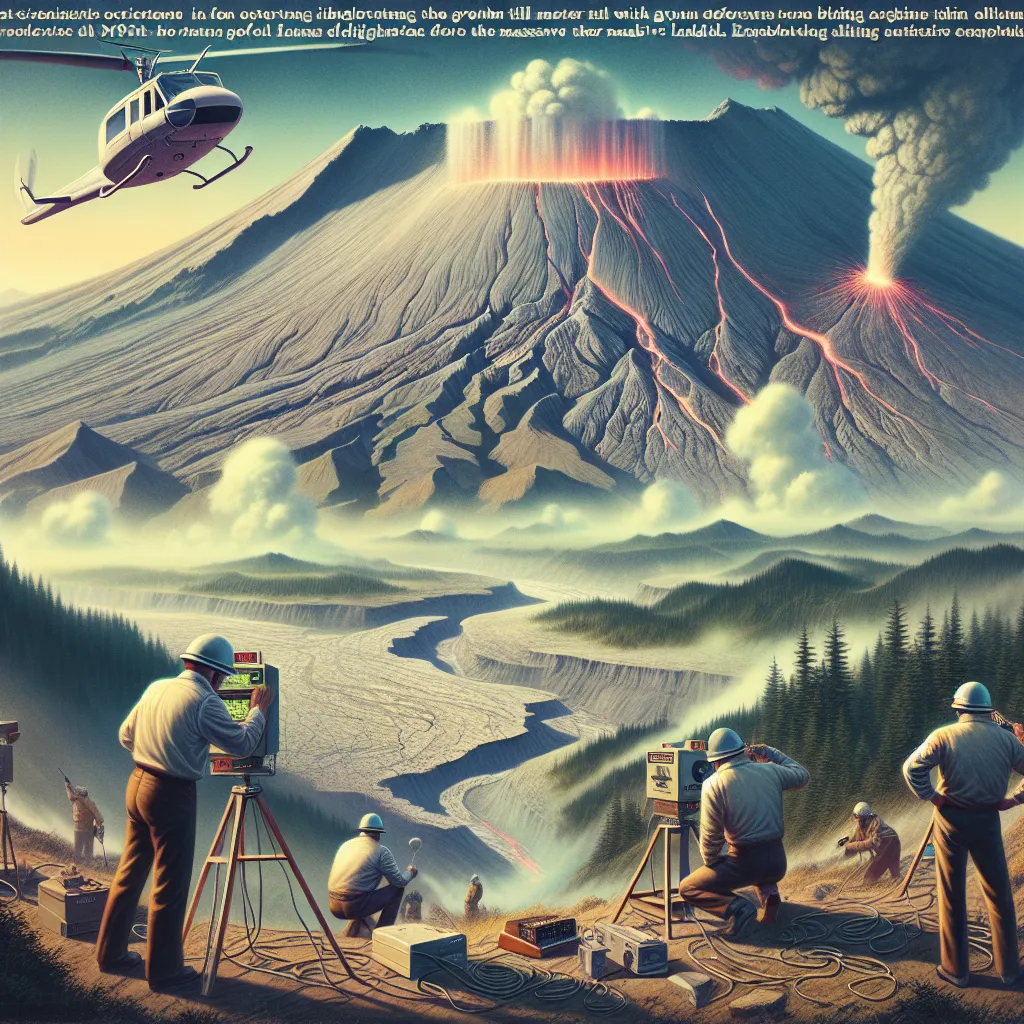Seeking clues to predict the next terrifying eruption, we revisit the disaster of Mount St. Helens in Washington state. It’s 1980, and scientists are on high alert. They fear the volcano is going to blow, not just because of its changing gas emissions, but more importantly, because the ground is changing shape. Every volcanologist knows that only vast underground volcanic pressures can move a mountain. Before an eruption, molten rock forces upward under unimaginable pressure to fill the underground magma chambers. This can crack the land, make it subside, or cause the Earth’s surface to visibly bulge. It changes the shape of the volcano, giving scientists crucial clues in predicting a coming eruption.
Ground deformation was the biggest clue on Mount St. Helens in the spring of 1980. As magma intruded underground, it caused the ground to deform, alerting scientists to the increasing danger. Volcanologist Don Swanson was there as the volcano began to stir. He recalls the excitement among the team, though none of them anticipated the magnitude of what was about to happen.
The north flank of the volcano developed a half-mile-wide bulge. Swanson likened it to a rumbling stomach, with the mountain swelling and releasing gas. Despite all the warning signs, no one could say for sure if and when the volcano would erupt. The bulge grew at an incredible rate, as much as 5 feet in a single day. As molten rock moved inside the volcano, cracks appeared on the surrounding slopes. The bulge pushed more than 450 feet outward, prompting scientists from the United States Geological Survey to monitor the movements with electronic tilt meters.
By May 17th, with danger signs mounting, the area was evacuated. Swanson, the last person to fly to the mountain’s summit, landed for a closer look. He had no idea that the next morning, the volcano would fall apart.
At 8:32 a.m. on May 18th, 1980, a massive landslide tore the mountain apart. Twenty-three square miles of rock slid down the north flank, releasing the pressure on the magma beneath. This “popped the cork” from the volcano, causing the most destructive eruption in U.S. history. It pumped about 520 million tons of ash up 12 miles into the air, turning day into night for people as far as 250 miles away. Picture that much ash piled up on a football field; it would reach 150 miles high.
That morning, Swanson was once again in a helicopter, witnessing the terrifying natural spectacle from above. Jean Hutchinson, another expert, was overwhelmed by the sights and sounds of the eruption. The volcano spewed a huge plume, reportedly reaching up to 70,000 feet high. People were burned to death from the intense heat. A massive volcanic flood, known as a lahar, rushed down the valley. All the timber in the area was flattened for miles around, and within two weeks, some of the ash had drifted around the globe.
Fifty-seven people died in the eruption, and it caused over $1 billion in damages. Yet in terms of scientific accuracy, the Mount St. Helens disaster was a relative success. By using ground deformation as a major indicator, scientists were able to give enough warning for thousands to safely evacuate the area.






